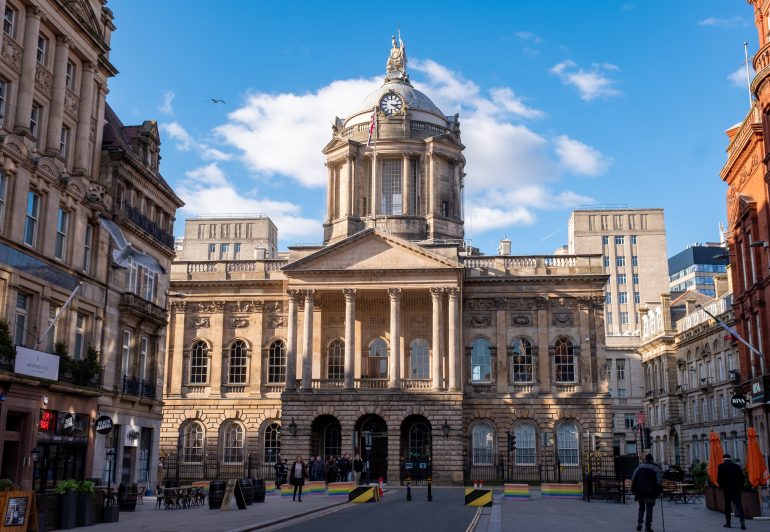Liverpool City Council is set to green light a proposition to look at public space and movement to transform how people move around the city centre over the next 20 years.
A report to the Council’s next cabinet meeting, being held on Tuesday 21 January, is recommending the approval of the Liverpool Urban Mobility and Public Spaces Plan. It will guide a multi-million pound investment programme up to 2045 in a bid to increase the use of public transport and to get people walking and cycling more.
The draft plan, which is part of the Council’s overarching drive to achieve net zero status, has identified key sites, opportunities and challenges within the city centre and proposes investment in enhanced transport and public space for both the immediate and longer-term future.
The cornerstone of this proposition is to future proof the city centre by creating a fully integrated public transport system, a comprehensive active travel network, and vibrant public spaces to create an exceptional urban experience.
The plan builds on the Liverpool city centre connectivity programme which saw more than £50m invested in upgrading key routes such as Lime Street and The Strand and developing active travel routes from the waterfront to the city’s Knowledge Quarter.
This proposition follows a data-driven approach to identify the next chapter in the evolution of the city centre and has identified three key mobility pillars: ‘People,’ ‘Place,’ and ‘Movement.’ which considers impact on all aspects of the city’s development and functionality.
Immediate progress will be through the introduction of “quick win” schemes, followed by long-term accelerated projects, ensuring continual progress towards the vision.
The initial quick wins are:
- Castle Street – develop the area to improve the public realm and link the business district to the city centre.
- Monument Place/London Road – work with the Green Bus Route team at the Combined Authority and the City Development team to develop bus priority measures and improve the public realm.
- Moorfields Station – develop a masterplan for the area to guide its development.
- St George’s Gateway – improve the pedestrian and public transport links.
- Parking Strategy – develop a strategy that guides parking for the whole city.
In the longer term there are proposals to change the bus routings, which would link to bus franchising and a suggested routing map that would improve connectivity across the city and its two main underground rail stations,
The adoption of the Urban Mobility and Public Spaces Strategy will ensure there is full alignment with the Council’s Transport Plan and Cycling and Walking Infrastructure Plan (LCWIP) to ensure people default to walk or cycle where possible rather than using a car. They will be supported to do this through the provision of a safe, accessible and inclusive transport system, powered by clean vehicles.
It will also focus on enabling sustainable travel behaviours, prioritising active travel, reducing the carbon impact of travel and transport, and maximising the Council’s commitments, including making best use of assets and resources available for alternative modes of travel and transport and making all form of travel more accessible for all.
The strategy will also support future growth of the City, and in respect of the Council’s declaration of the climate emergency, enable decisions to be made about how transport, streets and spaces are designed and used in the future


